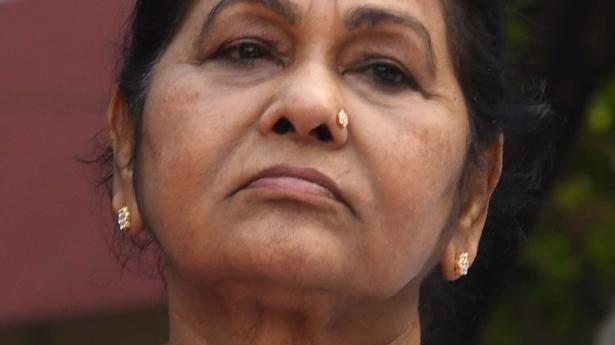
Hundreds bid adieu to the first woman chief of Sangeetha Nataka Akademi
The Hindu
The actor initiated many schemes for artistes during her time at akademi
For KPAC Lalitha, art was life and life was art — no matter how difficult the times. Nobody should explain to Lalitha, who herself had gone through many tough phases in life, about the issues plaguing an artiste.
As the first woman head of the Kerala Sangeetha Nataka Akademi her life was dedicated to art and artistes. Lalitha, who took charge as the chairperson of the Akademi in 2016, initiated many programmes and schemes to support artistes.
The huge crowd that reached the Regional Theatre in Thrissur on Wednesday to pay homage to her was testimony to the love people had for the versatile actor.
Condoling her death, akademi secretary K. Janardhanan said since she took charge as chairperson, Lalitha tried to make the akademi’s activities more people-friendly. “She tried to focus on the welfare of artistes whenever a programme was launched by the akademi. It was during her tenure that the akademi initiated elaborate schemes for the welfare of artistes,” he said. She brought professionalism in the akademi’s functioning. Even when she was busy in the film field, she provided a clear vision to the akademi’s programmes, he said.
When COVID-19 hit the performing art sector, the akademi came up with many schemes to support artistes in various sectors. Online programmes too were conducted.
A project to provide ₹50 lakh financial aid to 25 amateur theatre groups; a ₹2-crore project for 50 professional theatre groups; and financial support for performing artistes in various sectors were some of the schemes initiated during her tenure.
The akademi took theatre festivals to outside the State as well during the period, recalled N. Radhakrishnan Nair, former secretary of the akademi. “Theatre competitions were held in cities, including Mumbai, Pune, Chennai, Kolkata and Bengaluru, until the pandemic affected all public functions. Regional festivals were organised across the State. KPAC Lalitha was absolutely dedicated and sincere to the field of art and artistes,” he said.

 Run 3 Space | Play Space Running Game
Run 3 Space | Play Space Running Game
 Traffic Jam 3D | Online Racing Game
Traffic Jam 3D | Online Racing Game
 Duck Hunt | Play Old Classic Game
Duck Hunt | Play Old Classic Game

















